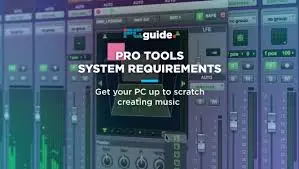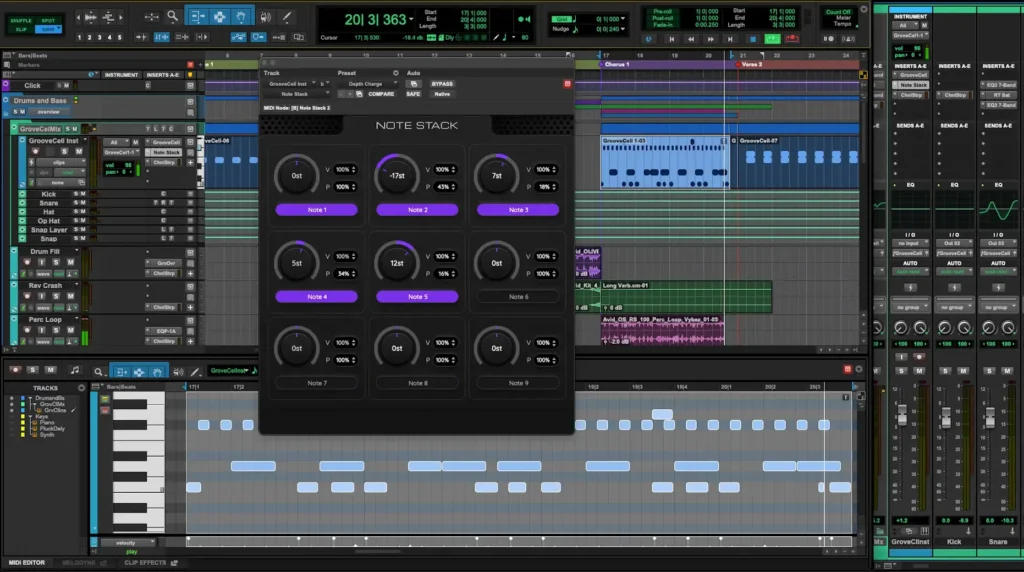
Introduction
Pro Tools Software is a cornerstone of the audio production industry, renowned for its powerful capabilities and professional-grade features. Whether you’re involved in music production, film scoring, or podcasting, Pro Tools offers a comprehensive suite of tools designed to meet the highest standards. This guide explores Pro Tools Software’s evolution, core features, system requirements, industry applications, and more.
The Evolution of Pro Tools Software
A Brief History of Pro Tools
Pro Tools, created by Avid Technology, debuted in 1991. Initially designed as a digital audio editor, it quickly evolved into a full-featured digital audio workstation (DAW). Over the years, Pro Tools has undergone numerous updates to enhance its functionality and meet the demands of the audio industry.
Key Milestones and Software Updates
- 1991: Launch of Pro Tools 1.0, featuring basic digital audio editing functions.
- 1999: Introduction of Pro Tools LE, offering a more affordable option with essential features for smaller studios.
- 2008: Release of Pro Tools 8, which brought enhanced MIDI capabilities and a redesigned interface.
- 2018: Pro Tools 2018.12 introduced cloud collaboration, enabling remote work and file sharing.
How Pro Tools Compares to Other DAWs
Pro Tools is well-known for its top-notch audio quality and smooth hardware compatibility. While other DAWs like Ableton Live, Logic Pro, and Cubase offer unique features, Pro Tools excels in professional studio environments due to its robust capabilities.
Exploring Pro Tools’ Core Features
Audio Recording Capabilities
Pro Tools is praised for its outstanding audio recording capabilities, such as:
- Multi-Track Recording: Supports up to 256 tracks simultaneously, ideal for complex music projects and film scores.
- High-Definition Audio: Provides 24-bit/192kHz resolution for exceptional sound quality.
Advanced Editing Tools
Pro Tools offers advanced editing capabilities with:
- Non-Destructive Editing: Lets you make adjustments without modifying the original audio files.
- Waveform Editing: Provides detailed options for precise audio adjustments and cleanup.
Mixing and Mastering Features
Pro Tools excels in mixing and mastering with:
- Mixer Interface: Features an intuitive layout with customizable signal flow and routing options.
- Built-In Plugins: Includes a variety of plugins for EQ, compression, and reverb, with support for additional third-party plugins.
MIDI Integration
For users of virtual instruments and MIDI data, Pro Tools provides:
- MIDI Sequencing: Powerful tools for creating and editing MIDI data.
- Virtual Instruments: Includes a wide range of virtual instruments and sound libraries.
System Requirements for Pro Tools

Minimum and Recommended Hardware Specifications
To ensure optimal performance, Pro Tools requires specific hardware specifications:
- Minimum Requirements:
- Processor: Intel Core i5 or equivalent
- RAM: 8GB
- Hard Drive: 15GB of free space
- Operating System: Windows 10 or macOS 10.14 Mojave
- Recommended Requirements:
- Processor: Intel Core i7 or higher
- RAM: 16GB or more
- Hard Drive: SSD with at least 30GB of free space
- Operating System: Windows 11 or macOS 12 Monterey
Operating System Compatibility
Pro Tools is compatible with both Windows and macOS, providing flexibility for users across different platforms.
Essential Peripherals and Accessories
To enhance your Pro Tools setup, consider investing in:
- Audio Interfaces
- MIDI Controllers
- Studio Monitors
Comparing Pro Tools Versions
Pro Tools Standard vs. Pro Tools Ultimate
Pro Tools offers two versions tailored to different needs:
- Pro Tools Standard: Provides essential features for most users, suitable for general recording, editing, and mixing.
- Pro Tools Ultimate: Includes advanced features such as extended track counts and surround sound capabilities, designed for professional studios.
Subscription vs. Perpetual Licenses
Pro Tools is available through:
- Subscriptions: Offer flexibility and access to the latest updates.
- Perpetual Licenses: Provide long-term ownership without recurring payments.
Choosing the Right Version
The choice between Pro Tools Standard and Ultimate depends on your specific needs. For smaller studios or individual use, Pro Tools Standard is often sufficient. For professional environments requiring advanced features, Pro Tools Ultimate is recommended.
Pro Tools Workflow Integration
Compatibility with Other Software and Hardware
Pro Tools integrates smoothly with:
- Audio Interfaces
- Control Surfaces
- Video Editing Tools
This compatibility ensures an efficient workflow across different stages of production.
Cloud Collaboration and Remote Access
Pro Tools’ cloud collaboration features allow:
- Remote Project Work: Multiple users can work on projects from different locations.
- Efficient File Sharing: Facilitates collaboration among remote teams.
Integration with Video Editing Software
Pro Tools integrates with video editing software like:
- Adobe Premiere Pro
- Final Cut Pro
This integration streamlines audio post-production and ensures synchronization with video elements.
Industry Applications of Pro Tools
Music Production
In music production, Pro Tools is valued for:
- High-Quality Audio Processing
- Versatile Mixing Capabilities
It is a top choice among producers and musicians for its reliability and advanced features.
Film and Television Post-Production
Pro Tools is used in film and television for:
- Sound Design
- Dialogue Editing
- Final Mixing
Its advanced features make it suitable for complex audio tasks.
Podcasting and Broadcasting
For podcasting and broadcasting, Pro Tools provides:
- Precise Editing Tools
- High-Quality Audio Recording
These features are essential for creating professional-grade content.
Training and Learning Resources
Official Documentation and Tutorials
Avid Technology offers:
- Comprehensive Documentation
- Tutorials Covering Basic to Advanced Techniques
These resources help users maximize Pro Tools’ potential.
Online Courses and Certification Programs
Several platforms provide:
- LinkedIn Learning
- Coursera
These courses and certification programs help users gain in-depth knowledge and enhance their skills.
Community Forums and User Groups
Engage with:
- Avid Community
- Gearslutz
These forums and user groups offer valuable insights and tips from experienced Pro Tools users.
Recent Developments and Future Trends

Latest Software Updates and Features
Recent updates have introduced:
- Enhanced Cloud Collaboration
- Improved Audio File Management Tools
Staying current with updates ensures access to the latest improvements.
Emerging Trends in Audio Production Technology
Trends include:
- Artificial Intelligence in Audio Processing
- Increased Remote Collaboration
Pro Tools is expected to evolve to incorporate these trends.
Predictions for the Future of Pro Tools Software
Future developments may focus on:
- Improving Collaboration Features
- Integrating AI Tools
- Expanding Support for New Audio Formats and Technologies
FAQs
- What are the differences between Pro Tools Standard and Pro Tools Ultimate?
Pro Tools Standard offers essential features suitable for general recording, editing, and mixing. Pro Tools Ultimate includes advanced options like extended track counts and surround sound capabilities, designed for professional studios. - What are the minimum system requirements to run Pro Tools?
The minimum requirements are an Intel Core i5 processor, 8GB of RAM, 15GB of free hard drive space, and either Windows 10 or macOS 10.14 Mojave. - Does Pro Tools work with both Windows and macOS?
Yes, Pro Tools is compatible with both Windows and macOS, providing flexibility for users across different operating systems. - What training resources are available for learning Pro Tools?
Training resources include official documentation, online courses, certification programs, and community forums where users can learn and improve their skills. - In which industries is Pro Tools commonly used?
Pro Tools is widely used in music production, film and television post-production, and podcasting and broadcasting due to its advanced audio processing and editing features.
You Might Also Like: Exploring Sheppard Software: The Future of Interactive Learning and Educational Technology
Conclusion
Pro Tools Software is a leading choice in the audio production industry, offering a robust suite of features for recording, editing, mixing, and mastering. Its evolution over the years has solidified its status as an industry leader, catering to a wide range of audio production needs. Whether you’re working in music, film, or broadcasting, Pro Tools provides the tools and flexibility necessary to achieve professional results.







